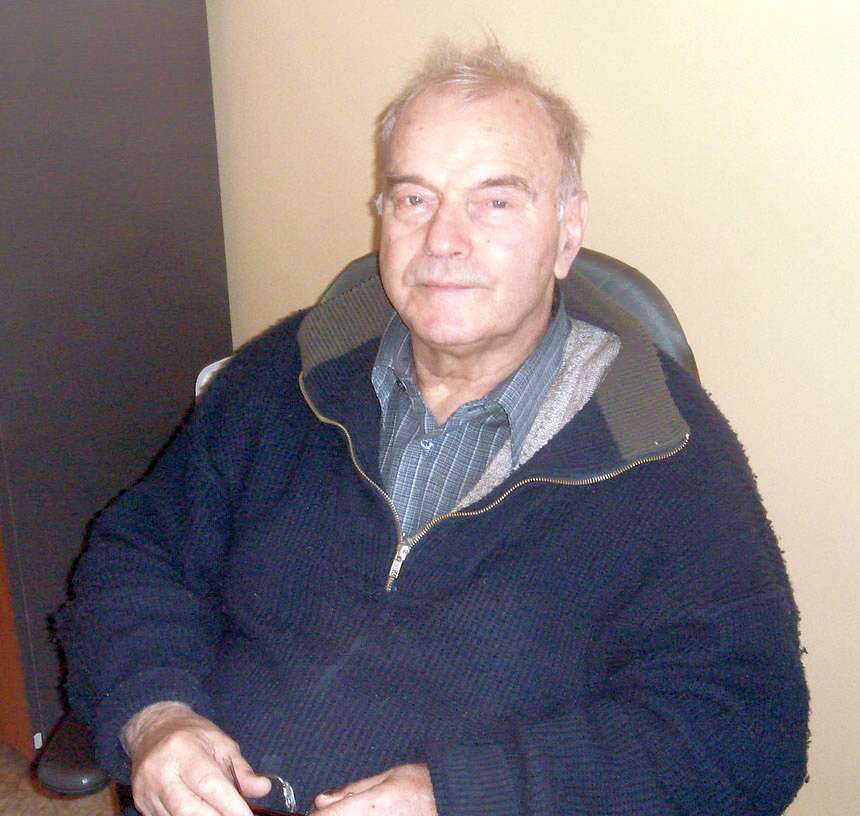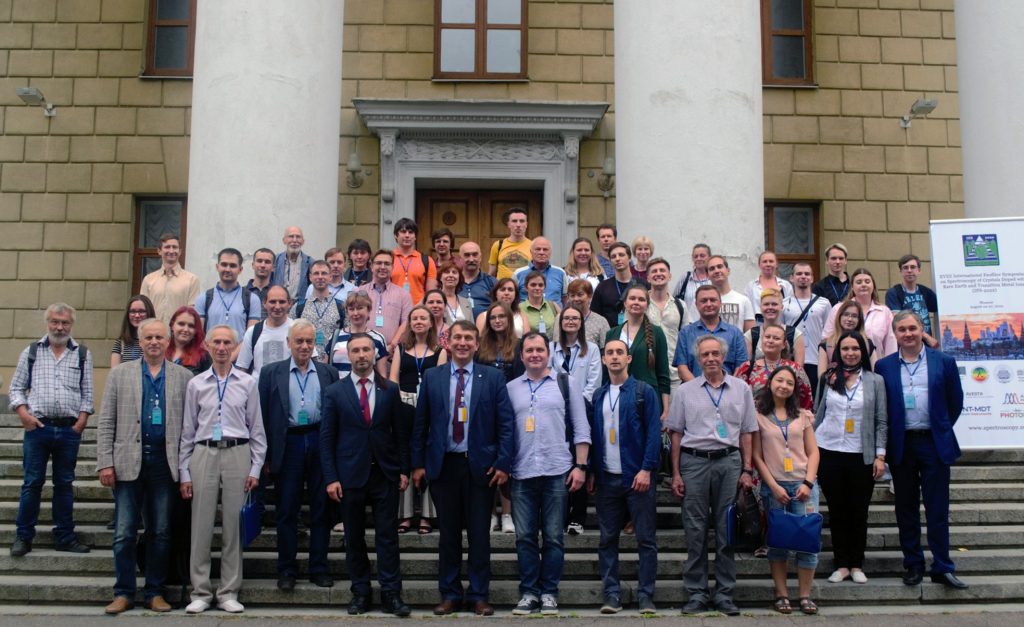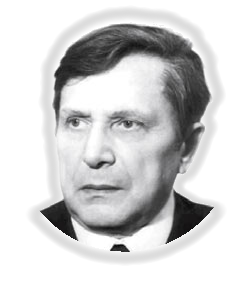News

In memoriam of Academician Alexander A. Kaplyanskii (14.12.1930 — 18.11.2022)
The International Advisory Committee of the Feofilov Symposium on the Spectroscopy of Crystals Doped with Rare-Earth and Transition Metal Ions announces with deep sorrow the passing away of Alexander Alexandrovich Kaplyanskii, Academician of the Russian Academy of Sciences, Head of the Laboratory of the Ioffe Physical-Technical Institute of the Russian Academy of Sciences, Professor, Honorary Doctor of St. Petersburg State University, Honorary Chairman of the Feofilov Symposium.
Academician A.A. Kaplyanskii is a well-known Soviet and Russian physicist, a specialist in the field of optical spectroscopy of solids. A series of his works is devoted to the study of excitons in semiconductors. He discovered the phenomenon of optical anisotropy of cubic crystals in the region of exciton resonance. He found out the splitting of lines of exciton transitions under the action of uniaxial elastic compression of crystals and the exciton structure in the photoconductivity spectra of semiconductors. He discovered the reversible splitting of the spectral lines of impurity spectra in crystals under the action of directed elastic deformation and developed a “piezospectroscopic” method for determining the local symmetry of impurity centers and point defects in crystals.
A.A. Kaplyanskii and his collaborators discovered and studied in detail the ferroelastic phase transition in a new class of dielectric crystals (mercury halides) with unique anisotropic properties.
In a series of works A.A. Kaplyanskii with co-workers studied by optical methods terahertz nonequilibrium phonons in crystalline and non-crystalline dielectrics and semiconductors, in systems with quantum wells, ceramics, fibers: modes of their propagation, scattering by defects, interaction with electronic levels of impurities and excitons, etc.
A.A. Kaplyanskii discovered the spontaneous formation of stable domains of a strong (~10 μV/cm) electric field under the action of optical excitation on impurity dielectrics, established the mechanism of anomalous photoelectric phenomena in ruby. He elucidated the role of the local inversion symmetry of impurity centers in the phenomenon of hole burning in the spectra of impurities.
In recent years, A.A. Kaplyanskii with his co-workers developed research on porous dielectrics, in particular, they observed non-equilibrium subterahertz acoustic oscillations of spherical nanoparticles and studied “photonic crystals”.
A.A. Kaplyanskii graduated from the Faculty of Physics of the Leningrad State University in 1953. After university, he was accepted into the graduate program at the Leningrad Physical-Technical Institute. In 1957, under the guidance of E. F. Gross, he defended his PhD thesis on the problem of detecting and studying the linear structure of the fundamental absorption edge of semiconductors associated with optical excitation of excitons. In 1967, he defended his doctoral dissertation on “Piezospectroscopy of crystals”. He headed the Laboratory of Solid State Spectroscopy at the Ioffe Physical-Technical Institute of the USSR (then Russian) Academy of Sciences. In 1987, he was elected Corresponding Member of the USSR Academy of Sciences; since 2003 — Academician of the Russian Academy of Sciences. Member of the St. Petersburg Scientific Center of the Russian Academy of Sciences. Editor-in-chief of the journal “Physics of Solid State”, member of the editorial board of the journal “Physics-Uspekhi” (Advances in Physical Sciences). Head of the branch of the Chair of Solid State Physics of the Faculty of Physics at the Ioffe Institute.
Winner of numerous awards for scientific achievements. Laureate of the Lenin Prize (as part of a group, 1966) for theoretical and experimental studies of excitons in crystals. Laureate of the State Prize of the USSR (1975) for a series of works on a new optical method for studying complex impurity centers and defects in crystals (1953–1972). He was awarded the Order of Honor (1999). Winner of the Alexander von Humboldt Prize (1997). Laureate of the A.F. Ioffe Prize (2008) for the series of works “Spectroscopic studies of photoelectric phenomena in crystals”. Awarded the Order of Friendship (2010). D. S. Rozhdestvensky Prize winner (together with A.K. Przhevuskiy and S.P. Feofilov, 2013) for the series of works “Spectroscopic studies of the structure of impurity centers and electronic processes in dielectrics containing rare-earth and transition metal ions “. Winner of the Petr N. Lebedev Gold Medal of the Russian Academy of Sciences (2021) — for the series of works “Photonic crystal opal-like structures: synthesis and studies of optical properties”.
The blessed memory of Alexander Alexandrovich Kaplyanskii will forever remain in our hearts.
The IFS-2022 was held in a hybrid format from 22 to 26 August in Moscow at the Lebedev Physical Institute RAS.

The XVIII International Feofilov Symposium on Spectroscopy of Crystals Doped with Rare Earth and Transition Metal Ions (IFS-2022) continues a sequence of symposia organized by Petr P. Feofilov and started in Moscow in 1965. The first nine events were held as national meetings. Already more than 20 years, symposia have been gathering researchers working in the fields of optical spectroscopy, condensed matter physics and solid state chemistry from all over the world. After the Xth (Saint Petersburg, 1995), XIth (Kazan, 2001), XIIth (Ekaterinburg, 2004), XIIIth (Lake Baikal, 2007), XIVth (St. Petersburg, 2010), XVth (Kazan, 2013), XVIth (St. Petersburg, 2015), XVIIth (Ekaterinburg, 2018) Symposia, IFS-2022 will be held in Moscow.
The IFS-2022 Symposium was organized by LPI RAS together with the Institute for Spectroscopy of the Russian Academy of Sciences (ISAN) and the Moscow State Pedagogical University (MSPU) with the organizational support of the Russian Academy of Sciences (Department of Physical Sciences RAS). The symposium was attended by specialists from Russian research and educational institutes as well as representatives of foreign research organizations and universities – a total of 90 participants from 33 organizations from 7 countries (Russia, Belarus, Latvia, Germany, the Netherlands, Brazil, New Zealand). At 9 thematic sections 4 plenary invited lectures, 16 invited, 31 oral and 32 poster presentations were presented. An electronic Book of abstracts was prepared for publication. Preparations are underway for the publication of a thematic issue of the journal Optics and Spectroscopy.
On the first day of the symposium, Professor Sergey Yu. Savinov, Assistant Director for Research of the LPI RAS delivered a welcoming speech to the participants. Then the solemn ceremony of awarding diplomas of the 2019 Prize of Academician D.S. Rozhdestvensky of the Russian Academy of Sciences. Diplomas to Professor Marina N. Popova (ISAN) and Professor Boris Z. Malkin (Kazan Federal University, KFU) for the series of works “Spectroscopy high-resolution crystals containing rare-earth ions” was presented by Academician of RAS Nikolai N. Rosanov. The greeting from the Russian Academy of Sciences was made by the Deputy Academician-Secretary of the Physical Sciences Department of the Russian Academy of Sciences Dr. Natalya L. Istomina.
A significant part of the symposium participants (28 people) were young scientists, students and graduate students under the age of 35, among whom there was a competition for the best scientific work. As a result of the competition, 10 young scientists received diplomas and memorable gifts. In the nomination “Young scientists, students and postgraduates” (without a degree), 1st place was taken by junior researcher of the Troits Branch of LPI RAS Ekaterina Smirnova, 2nd place – by Alexei Nurmukhametov (Kazan Federal University), and 3rd place – by Natalya Larina (Ogarev Mordovia State University) and Tatyana Igolkina (ISAN). Roman Shendrik (Vinogradov Institute of Geochemistry of the Siberian Branch of the Russian Academy of Sciences) took the first place in the nomination “Young scientists – candidates of sciences”, 2nd place was shared by Anastasia Babkina (ITMO University) and Damir Valiev (Tomsk Polytechnic University), 3rd place – by Konstantin Barantsev (St. Petersburg Polytechnic University of Perth the Great, SPbPU) and Ilya Kolesnikov (St. Petersburg State University). A special prize in the same nomination was given to Ph.D. Alexey Kuraptsev (SPbPU).
At the closing meeting of IFS-2022, the co-chairs of the IFS-2022 Program Committee, Professor Marina Popova (ISAN) and Professor Boris Malkin (KFU), Professor Eugeny Martynovich (Irkutsk branch of ILP SB RAS), as well as the plenary guest lecturer of IFS-2022 Professor Andries Meijerink (University of Utrecht, the Netherlands). The participants of the symposium unanimously supported the proposals received by the Organizing Committee to hold the next 19th International Feofilov Symposium in 2025 in Saransk on the basis of the National Research Ogarev Mordovian State University and(or) on Lake Baikal on the basis of the Irkutsk branch of the Institute of Laser Physics of the Siberian Branch of the Russian Academy of Sciences. The final decision on the venue of IFS-2025 will be made by the Symposium’s International Advisory Committee in 2024.
New for participants: there is agreement to publish post-conference
Special Issue of the International Journal
“Optics and Spectroscopy” with full-text papers.

About Petr P. Feofilov

Petr P. Feofilov, one of the most famous Russian researchers in optical spectroscopy in the XX century, began his research under the supervision of the Academician Sergey I. Vavilov. Feofilov has made a great contribution to the development of physics of crystals doped with transition metal ions. He is one of the first in the world to have begun the systematic investigation of the optical properties of crystals comprising ions with uncompleted shell, e.g. rare earth (RE) ions and uranium. He was the first to state such essential problems as multiple activator sites problem, crystal-chemical conditions of activation, physical structure and energy of the RE-sites. Feofilov has developed and successfully implemented the method of polarized luminescence for investigation of the RE-sites. The book “Polarized luminescence of molecules, solutions and crystals” now is a classical course book to study luminescence spectroscopy. The studies of luminescence properties of crystals performed by Feofilov have allowed the creation one of the first solid state lasers based on calcium fluoride doped with samarium and uranium ions. The research by Feofilov has a great impact on such areas of solid state physics as crystallography and optical spectroscopy of defects in crystals. Besides, Feofilov was a friendly, open-minded and talented person.
Conference organizers
Lebedev Physical Institute RAS (LPI RAS, Moscow)
Institute of Spectroscopy RAS (ISAN, Troitsk, Moscow)
Moscow State Pedagogical University (MSPU, Moscow)
Russian Academy of Sciences (RAS, Moscow)
Honorary Chairman: Alexander A. Kaplyanskii
Chairman: Andrey V. Naumov
Symposium is supported by:
Department of Physical Sciences &
Corps of Professors of the Russian Academy of Sciences
Topics
- f– and d-ions in crystalline and non-crystalline insulators and semiconductors, energy transfer
- electron-phonon interaction and dynamics
- relaxation of excited states and photoinduced phenomena
- microwave-optical and terahertz spectroscopy
- magnetic resonance spectroscopy
- magneto-optical spectroscopy
- cooperative processes and coherent phenomena
- electron structure modeling and spectra simulation
- microscopic theory of exchange and hyperfine coupling
- nonlinear spectroscopy
- probing of organic and biomaterials
- charge transfer phenomena and charge ordering
- solid-state lasers, scintillators, phosphors
- crystallography aspects of optical materials development
- spectroscopy of photonic crystals
- quantum information processing and instrumentation
e-mail: [email protected]



